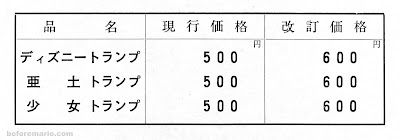In today's blog post, we will explore Nintendo's 1989 company overview (会社概況). This document presents the then-century-old company poised to enter the networked information age, riding on the massive success of the Famicom and NES game consoles and their related games, as the company aimed for even greater ventures.
The overview spans sixteen pages, all printed in full color, with all text in Japanese.
The opening pages depict an aspirational image of a home console soaring across the globe, accompanied by the caption: 'Leading the world of home entertainment' (ホームエンターテインメントの世界をリードする).
The text begins with:
In 1983, the world of home entertainment entered a new era with the introduction of Nintendo's "Family Computer" or "Famicom" for short. The Famicom quickly became a household staple across Japan. In 1985, it was introduced in the United States under the name "Nintendo Entertainment System (NES)," and, like in Japan, it rapidly gained popularity in American households.
Nintendo is currently exploring the creation of "Famicom Network" to fully harness this power. The Famicom Network is a network of new gaming and communication possibilities using regular telephone lines. With this network, people can enjoy games with others from far away, engage in stock trading with information from securities companies, go shopping, reserve tickets, and more. Since the fall of 1988, we have already partnered with securities companies to offer various stock market information through "Famicom Trade," and the number of users has been steadily increasing.
The conclusion states:
As Nintendo envisions the Famicom Network expanding worldwide, we are confident that people's communication will become richer, and home entertainment will offer even more diverse and enjoyable experiences.
Next is an introduction by Nintendo's Director and President, Hiroshi Yamauchi (山内 薄). The title of the introduction is called 'Our company's direction' (当社の路線).
It begins by recounting the success of our first cartridge-based game console, the 1983 Family Computer, or Famicom for short, and its 1985 Western version, the Nintendo Entertainment System, or NES:
... the "Family Computer" [...] has already spread to approximately 14 million households in Japan and the rapidly spreading "Nintendo Entertainment System" (NES) in the United States (the American version of the Family Computer), will be adopted by a combined total of several tens of millions of households in Japan and the United States by the mid-1990s.
Based on this, the company positioned itself as a key player in a new market extending beyond toys, games, and entertainment:
Our company plans to build a vast network that was previously unthinkable, using these devices [the Famicom and NES] as communication terminals within households, utilizing the telephone network. We aim to provide information that is deemed essential for household life, including entertainment, as well as financial, securities, and health management information. Furthermore, we are promoting partnerships with authorities in each field and considering ways to make various beneficial information easily and inexpensively accessible.
All of this was in placed the context of 'The advent of a highly information-oriented society.' The introduction text mentioned the word 'information' no less than eight times while using 'entertainment' only once. This was a stark shift from the company's focus until just a few years earlier.
Yamauchi-san was around 62 years old at this time, having already led the company for an astounding forty years, beginning as President at the age of 21. From 1989, he continued as Nintendo's President for another thirteen years, up until the GameCube era when he handed over his position to Satoru Iwata. He remained involved as chairman of the board of directors until his retirement in 2005 at the age of 77.
But all of that was still far into the future when this company overview was created. Let's delve into the company information provided.




















































